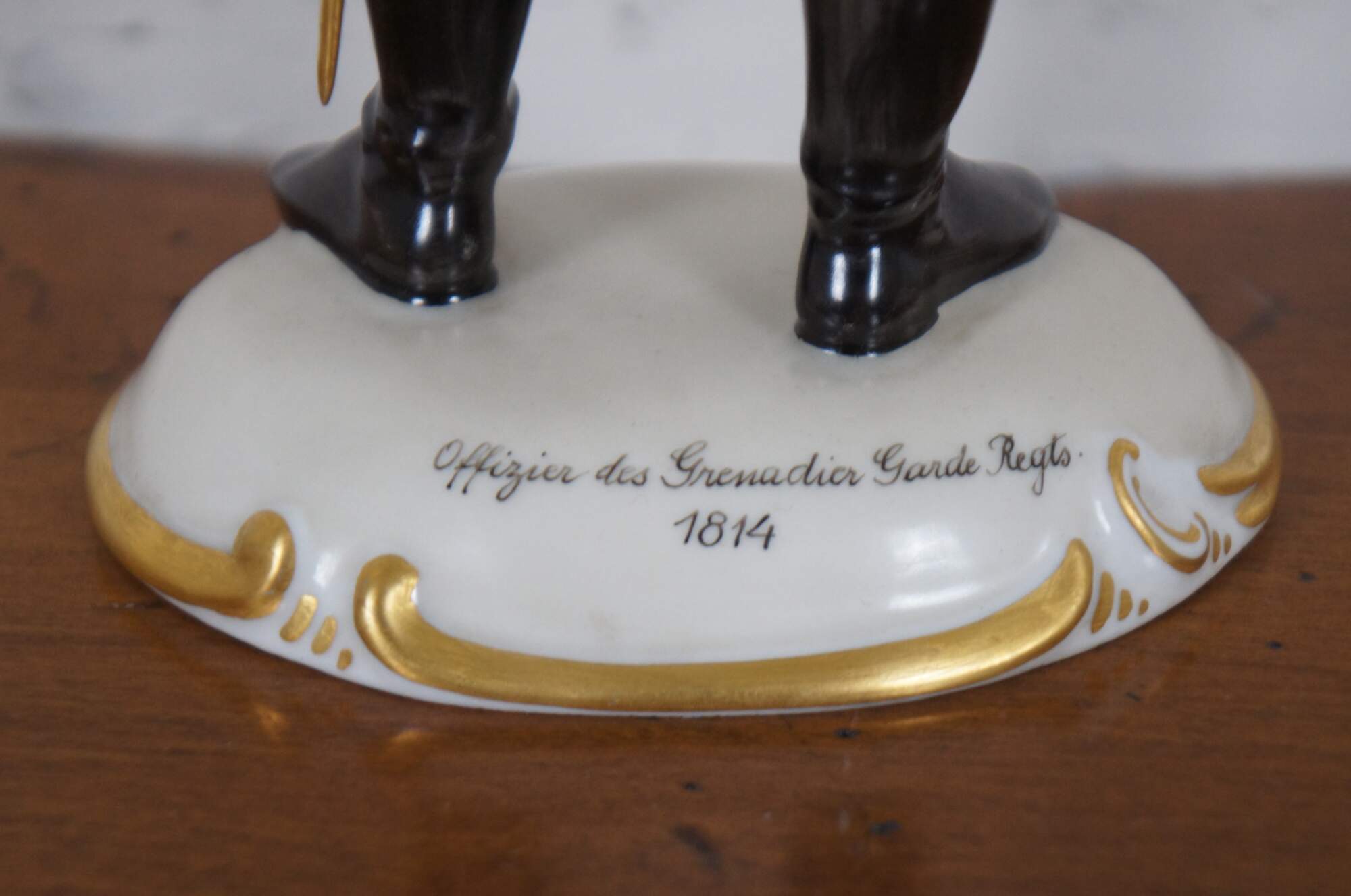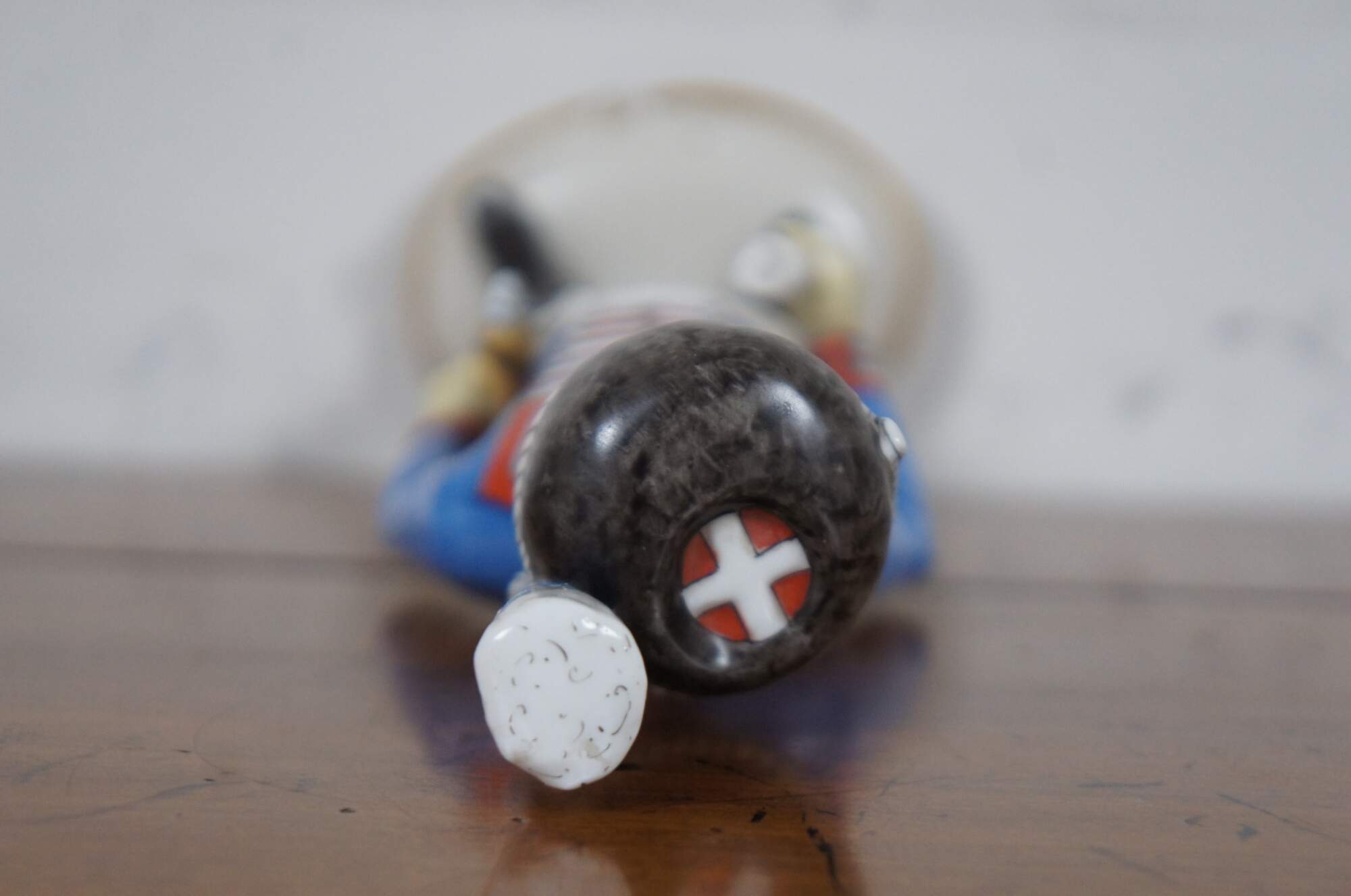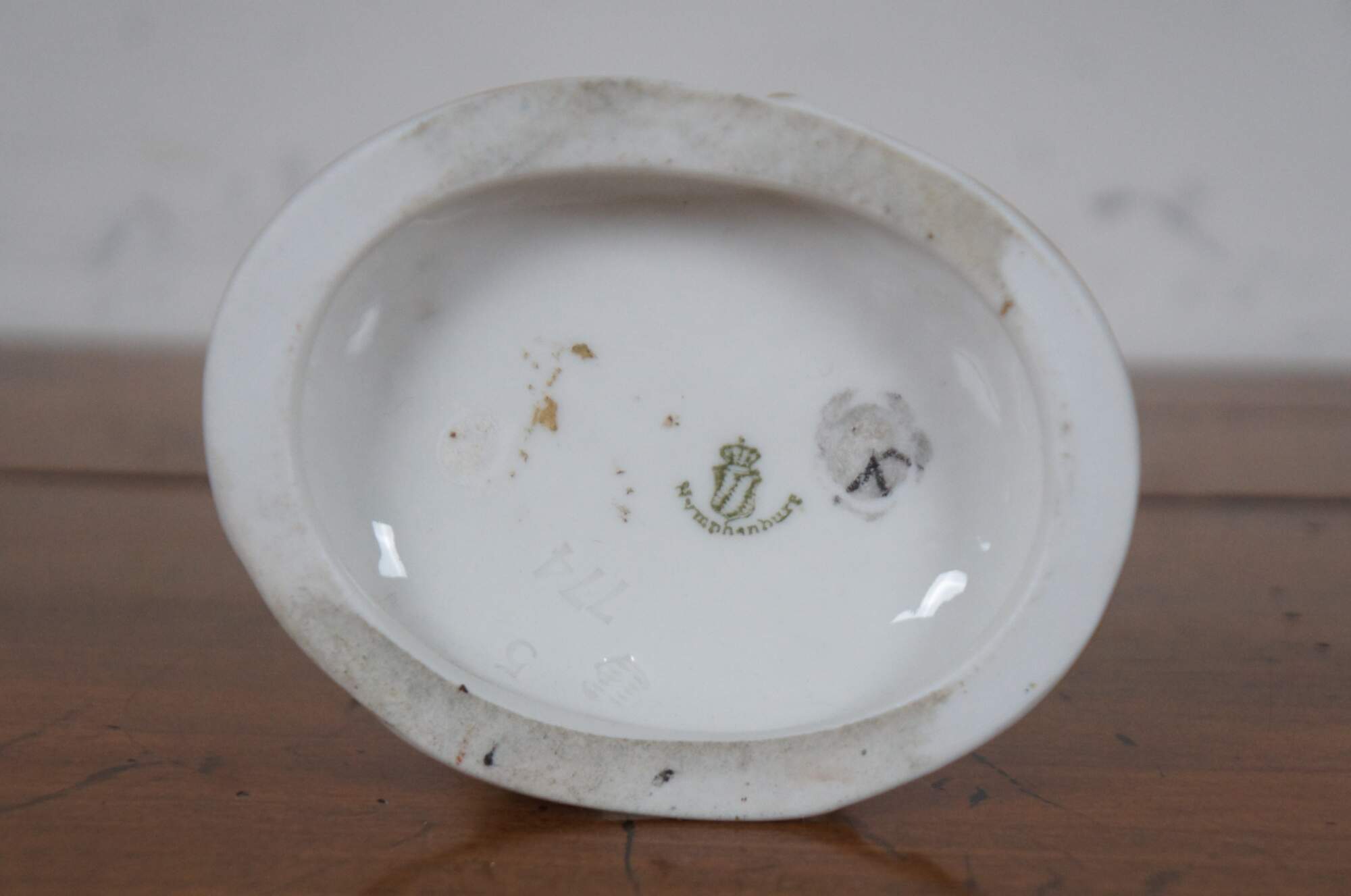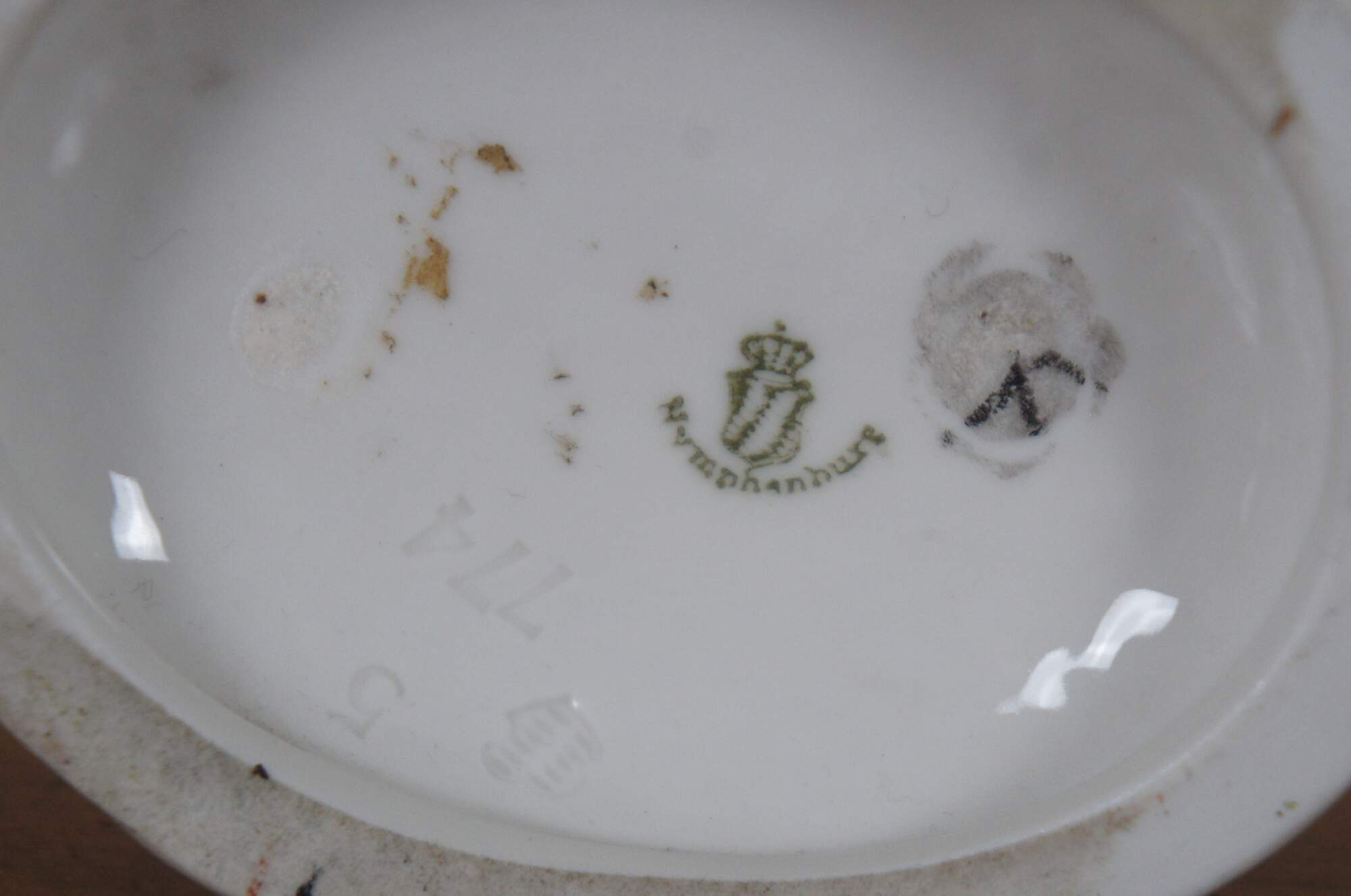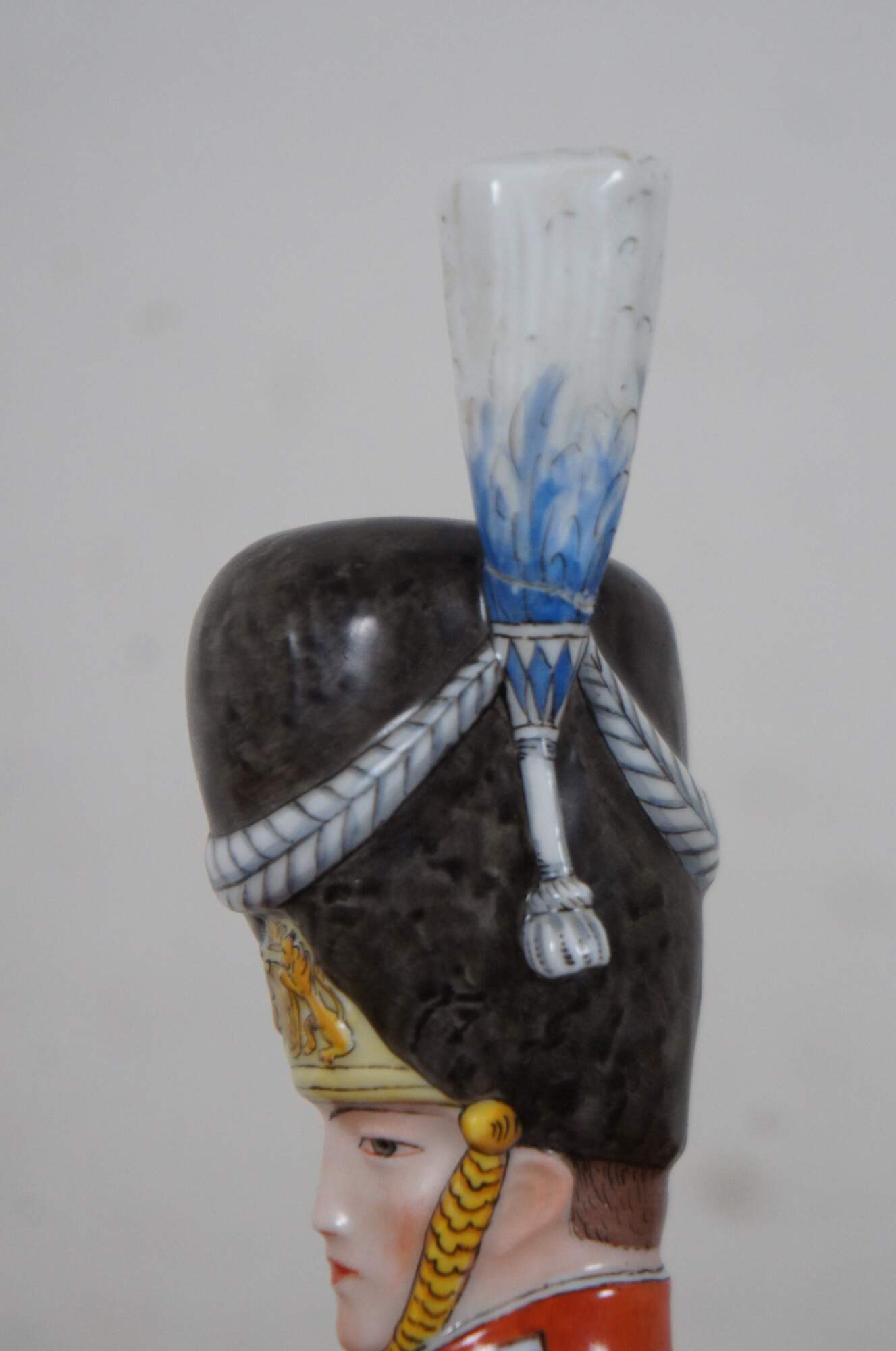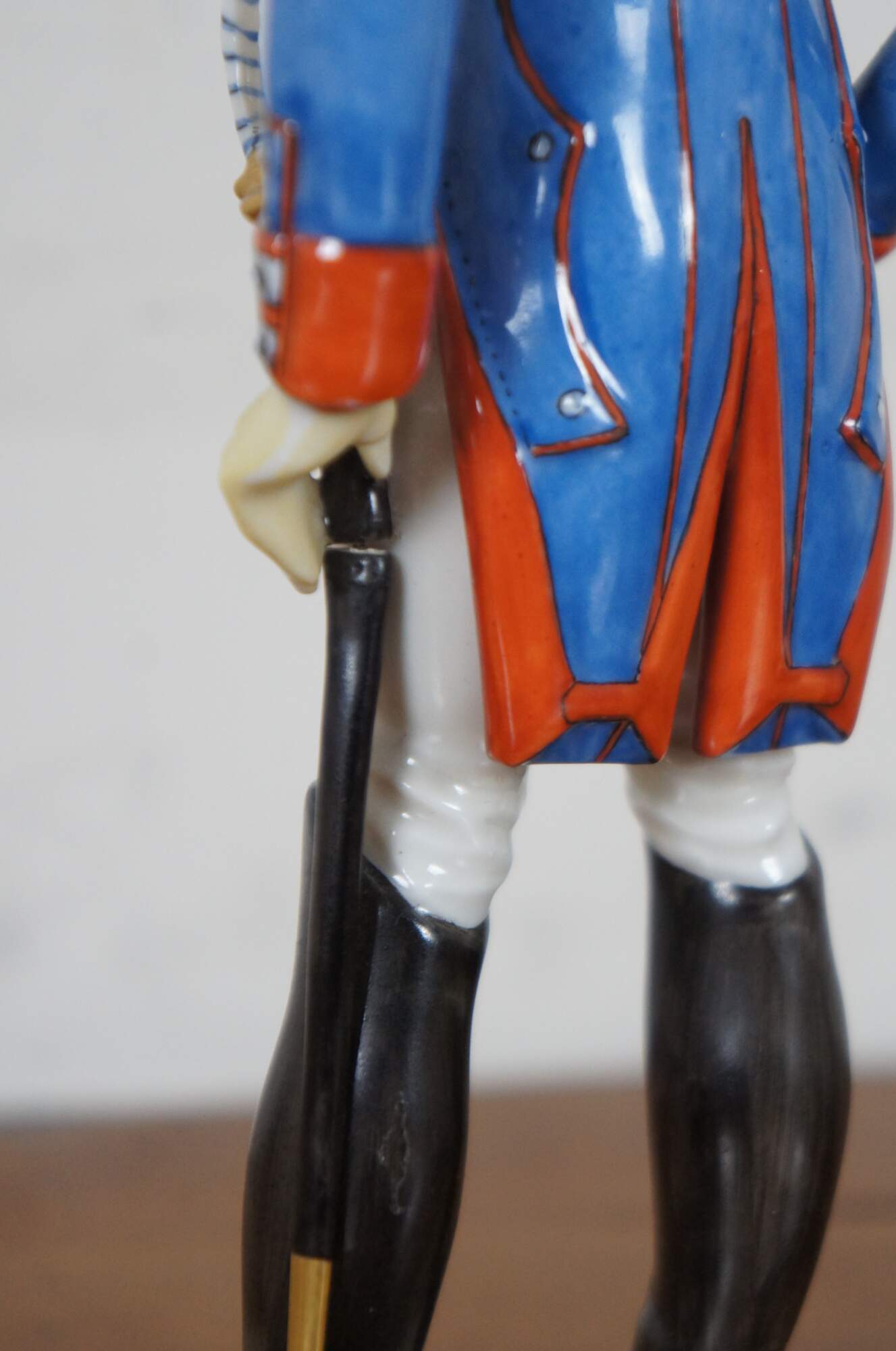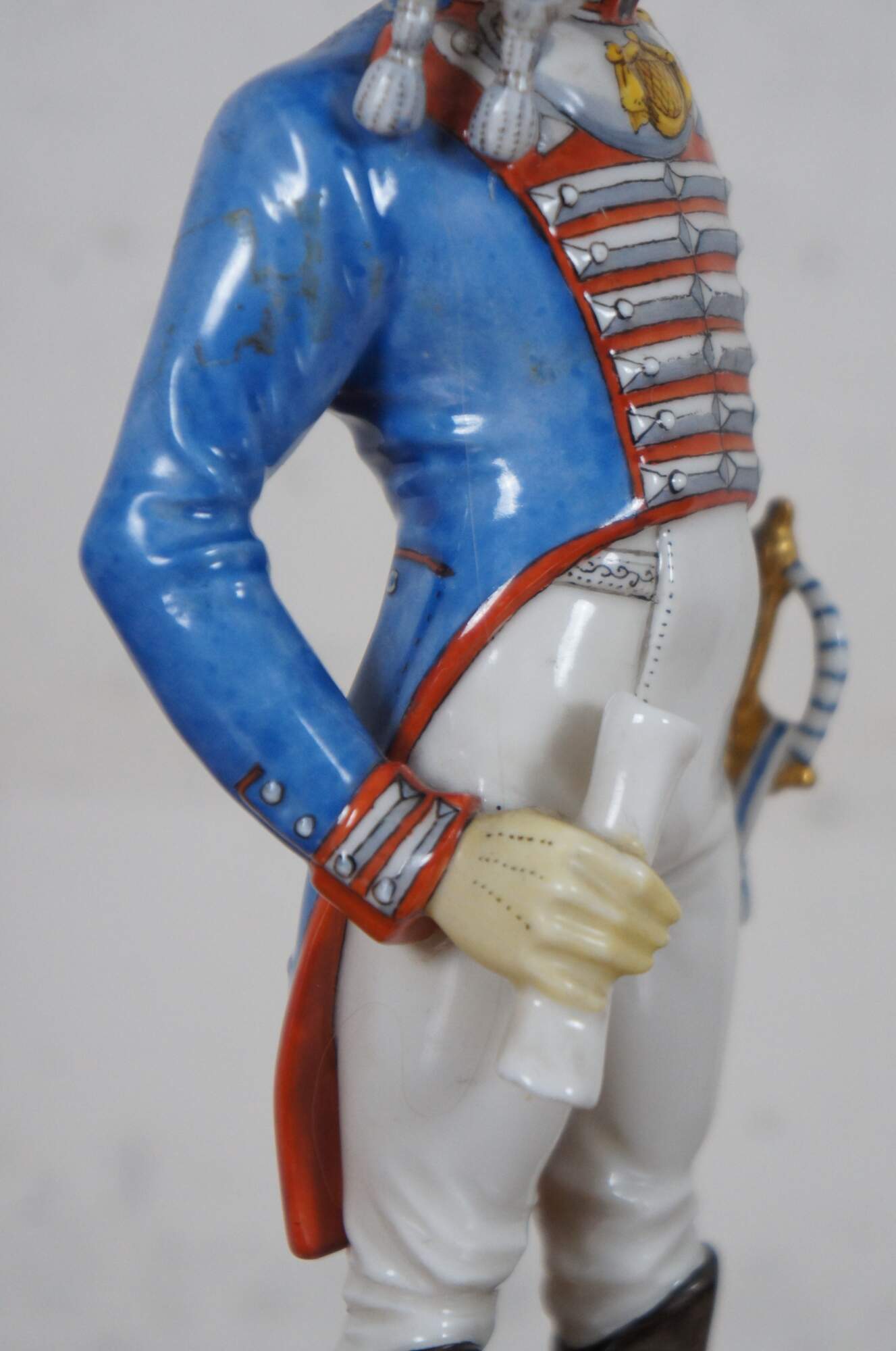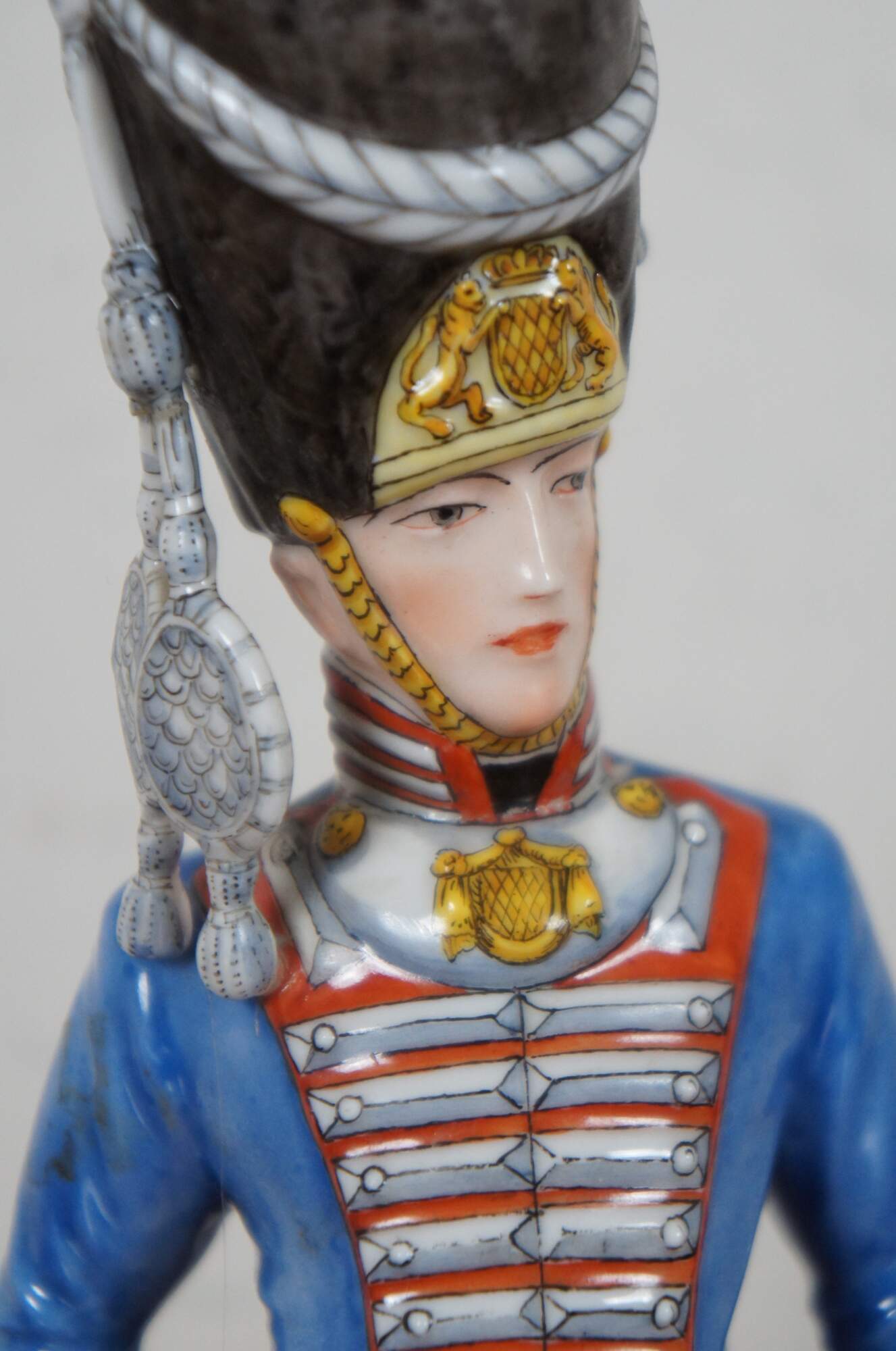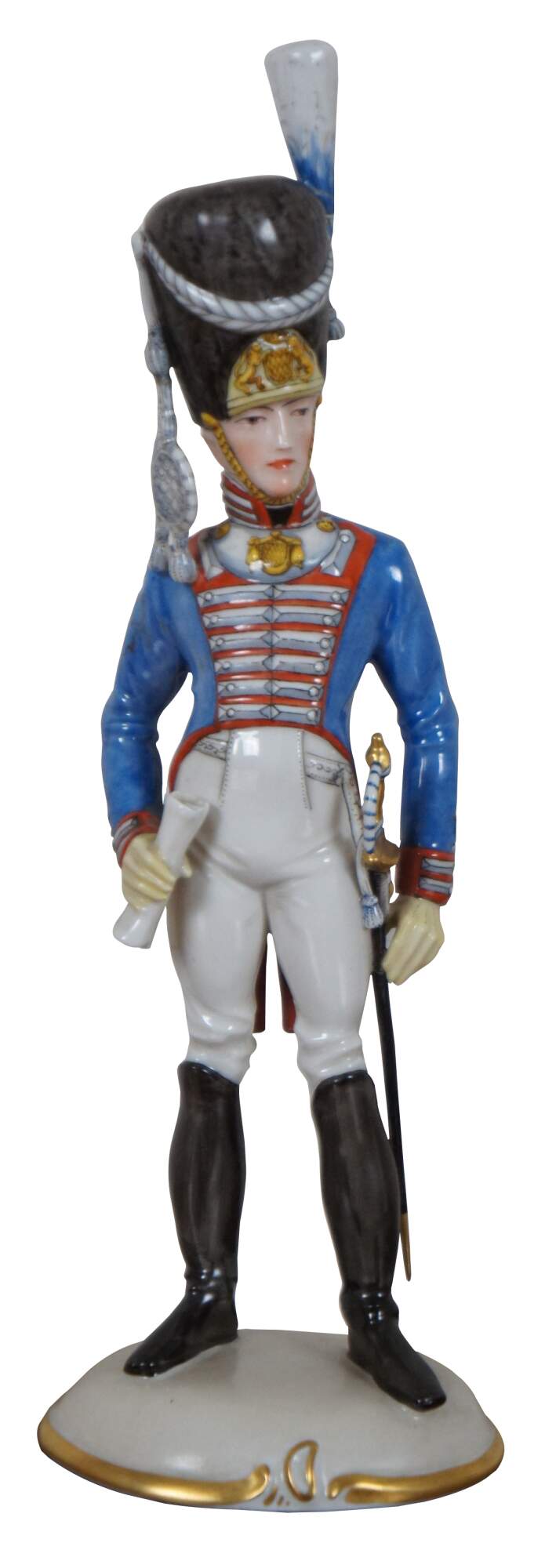
Antique German Nymphenburg Porcelain Napoleonic Grenadier Soldier Figurine 12.5"
Sold
Shipping:
Free Shipping Included
Delivery:
Estimated 2-15 Business Days
Payments:
Credit Card, Check, Cash, PayPal, Apple Pay, Venmo
Returns:
30 Days 100% Money Back Guarantee, Buyer Pays Return Shipping
Description
Antique Nymphenburg porcelain “Offizier des Grenadier Garde Regts. 1814” (Officer of the Grenadier Guard Regiments 1814) figurine.
“The Nymphenburg Porcelain Manufactory (German: Porzellan Manufaktur Nymphenburg) is located at the Nördliche Schloßrondell in one of the Cavalier Houses in front of the Nymphenburg Palace in Munich, Germany, and since its establishment in 1747 has produced porcelain of high quality. It is one of the last porcelain producers in the world where every single part is made entirely by hand. The history of the Porzellan Manufaktur Nymphenburg is inseparably linked with the history of the Bavarian royal house of Wittelsbach. On November 1, 1747, the Elector Max III. Joseph started the electoral porcelain manufactory in his “Green Castle” in Neudeck near Munich. Located directly on the Auer Mühlbach, the water power required to operate the machinery was ensured there. Initial difficulties in production and high investments without resounding success quickly waned the Elector's interest in porcelain production. It was not until 1754, when the production of porcelain was achieved for the first time in a controlled manner, that the elector regained his enthusiasm about the “Electoral Porcelain Fabrique”. From that day on, the porcelain manufactory, which was financially and ideally supported by the Wittelsbach family, became an important prestige object of the Bavarian electorate.
Porcelain - the ""white gold"" - was considered one of the most valuable and sought-after luxury goods of the time, and it was cared for and revered with the same respect as religious relics and/or precious stones. Porcelain was the epitome of courtly sophistication and was used to the highest degree for representative purposes. Accordingly, the Wittelsbachers were initially the largest buyers of the electoral porcelain - the “Bavarian royal service” was commissioned there as well as gifts for befriended electoral dynasties and royal families. Each plate and cup was marked with the diamond pattern of the Bavarian coat of arms so that the Nymphenburg porcelain became an electoral export brand.
Since the possibilities of expansion in Neudeck were limited, the manufactory moved in 1761 to the northern lane of the Nymphenburg Palace, which was built for this purpose. In the years that followed, the porcelain manufactory flourished. Their reputation for producing porcelain of the highest quality and craftsmanship soon spread far beyond the country's border and Nymphenburg porcelain was delivered to distant destinations including Venice. With the elector Carl Theodor and his successor Max IV. Joseph - both from the Palatinate line of the Wittelsbach family - the porcelain manufactory was expanded again. Carl Theodor moved from his Mannheim residence to Munich to exercise his offices, bringing his art treasures with him.
Under the rule of Max IV. Joseph, the Frankenthal porcelain manufactory was incorporated into Nymphenburg in 1800. Known above all for their figurative designs, the experience and artistic skills of the Frankenthal craftsmen continued to have an effect on the Nymphenburg Porcelain Manufactory. Bavaria had been a kingdom since 1806, and in 1815 the manufactory was named a state art institution. The fact that King Ludwig I took over his reign in 1825 gave porcelain painting a new impetus: he commissioned plates that were not used as a service, but were intended to document the most important works of art of the time. These “reproductions” on porcelain are now on loan from the Wittelsbach Compensation Fund in the Munich Residence and Marstall Museums. With increasing industrialization, the focus of production changed: more and more technical porcelain, such as insulating bells for telegraph masts or laboratory porcelain was made and the artistic commissions faded into the background. The Wittelsbachers leased the porcelain manufactory - since it could not be sold due to its royal location. From 1888 to 1975 the Bäuml family took over the lease. Albert Bäuml had recognized the potential of the manufactory, which at this point had already suffered significantly from the restructuring, and applied for the lease. Thanks to him, the tradition of Nymphenburg porcelain of the 18th century was resumed. He began to renovate the building and had the Nymphenburg dinnerware reproduced according to classic forms. Porzellan Manufaktur Nymphenburg owes its extensive archive of shapes and patterns to his research activities. A large portion of the production buildings was destroyed during the Second World War. The valuable molds and models, however, were able to be preserved - they had been removed early on and secured in the basement of the Badenburg. The brothers Alfred, Fritz and Kurt Bäuml rebuilt the manufactory after the war. After the death of his brothers, Kurt Bäuml continued to run the factory until 1975 and then returned it to the Wittelsbach Compensation Fund thanks to the dedication of HRH Duke Albrecht of Bavaria. Porzellan Manufaktur Nymphenburg has been under the patronage of HRH Duke Franz von Bayern since 1996. In October 2011, Prince Luitpold of Bavaria took over the Porzellan Manufaktur Nymphenburg from the Wittelsbach Compensation Fund.”
Condition
Good Overall - Past repair to hat feather; sword loose
Dimensions
4.25” x 3.25” x 12.5” (Width x Depth x Height)



